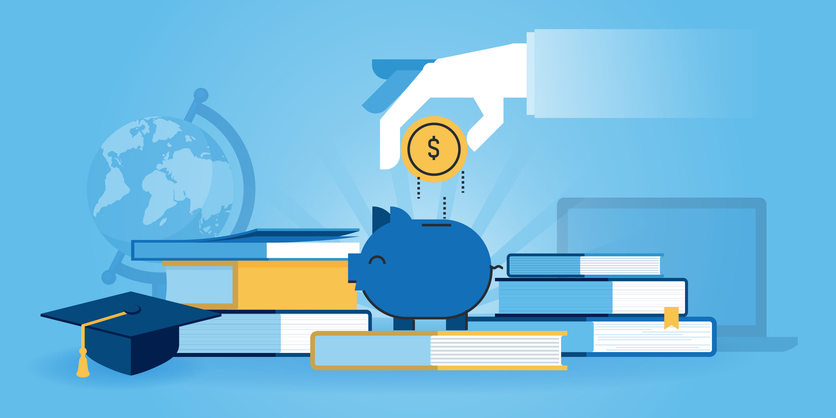Credit Recovery: Solutions for High School Students
Credit recovery programs are designed to help students who have failed courses or fallen behind in their studies, catch up and get back on track. These programs provide an avenue for students to make up for lost credits, and gain the skills necessary for success in school. In this blog post, we will discuss the benefits and challenges of credit recovery programs, as well as provide examples of successful initiatives.
Understanding Credit Recovery Programs
Credit Recovery Programs come in a variety of forms. They can be online, self-paced modules; they can be summer school or night classes; they can even be one-on-one tutoring sessions with a certified teacher or mentor. Generally, these programs are designed to enable students to retake failed courses or make up lost credits quickly and efficiently.
In order for credit recovery programs to be effective, there are several key factors that must be taken into consideration. First, the program should be tailored to the student’s individual needs – providing them with targeted instruction and support that will help them master the material. Second, there must be an emphasis on developing a deep understanding of the subject matter – not just memorization of facts and figures. Finally, credit recovery programs should also focus on building strong study skills as well as providing feedback throughout the process so that students can measure their own progress
Examples of Successful Credit Recovery Programs
One example of a successful credit recovery program is “The Graduation Project” developed by The National Center on Education and the Economy (NCEE). This program is designed to help high school dropouts earn credits towards their diploma by taking college-level classes in lieu of traditional classes in high school settings. This initiative has proven to be incredibly successful – with over 10% more students earning diplomas than those who did not participate in the program.
Other successful initiatives include “The Credit Acceleration Program” which enables high school seniors who are at risk of dropping out due to lack of credits earned, to take courses during summer school or after hours so that they may catch up without falling behind in other subjects. And “The Accelerated Learning Program” which provides opportunities for middle schoolers who have fallen behind academically to receive one-on-one tutoring from certified teachers while still attending regular classes within their schools during regular hours. Both initiatives have been highly successful in helping disadvantaged learners get back on track academically while avoiding dropping out altogether.
The Future of Credit Recovery Programs
Credit recovery programs offer great potential for helping disadvantaged learners get back on track academically and avoid dropping out altogether. As more schools recognize the need for equity in education access, it is important that these initiatives continue to develop and evolve so that they may reach all learners regardless of socio-economic status or background. With proper implementation strategies and ongoing research into how best to tailor programs for different groups of learners, credit recovery programs could become an integral part of our educational system – leveling the playing field for all students seeking quality education opportunities regardless of background or circumstance.
Strong Credit Recovery Programs
Credit recovery programs provide an opportunity for students to make up coursework and get back on track academically. However, simply making the program available isn’t enough; it also needs to be engaging, customized and personalized in order to create lasting academic success. This means combining strong online programs with real-time support and feedback from instructors. The key is a collaboration between teachers and technology which ensures the student remains engaged and understands the material. Strong programs provide learners access to courses and personalized instruction which allow them to make up missing credits and still meet the requirements on time and efficiently. By providing these elements, a successful credit recovery program can help ensure students stay on track academically throughout their school years.
Progress Learning Supports Credit Recovery
Progress Learning is a great supplemental credit recovery resource for students who are in need of a little extra help in meeting their graduation requirements. Our Assessment and Assignment Builders are valuable tools when it comes to designing credit recovery courses, and although Progress Learning doesn’t act as a stand-alone credit recovery course, the tools we provide are crucial in supplementing the areas that need additional study.
Our tech-enhanced items, or TEIs, provide a variety of question types to more closely align with what students are seeing on standardized summative assessments for course and state requirements. The inclusion of multiple question types allows students the opportunity to move beyond multiple choice and build the necessary foundation for reinforcing comprehension and retention.
The individual skills practice and study plans provide customized student-centered practice to target areas of need. Our platform can help students become more familiar with the key concepts and specific language of each domain, subject, and standard they need to master and support them in forming a much stronger knowledge base necessary for achieving credit recovery.
Denise Robider is a 9th grade, Algebra 1 teacher at Windsor Forest High School in Savannah, GA, who has seen positive results using Progress Learning with her students in their “Twilight” credit recovery program.
“Kids go to the lab and work through courses,” explains Robider. She notes that students were coming back from COVID with low lexile skills, struggling with the language of math as much as the math itself.
“They just aren’t familiar with the math terms,” she says. “So I upload notes and videos onto Google Classroom and then assign a classwork assignment via Progress Learning.”
She notes that “Progress Learning forces them to dig a little deeper,” and that “it’s obvious they are catching on to the language and the concepts. I saw a big difference in the types of questions the kids were asking, indicating they had a much stronger base knowledge to even be able to frame the questions.”
The Twilight program at her school uses several different online programs for credit recovery, and Robidar says she appreciates how simple it is to use Progress Learning in conjunction with other resources, such as Google Classroom.
Having used Progress Learning for more than a year now, she says she thinks the questions are “great,” and intends to up her use of the platform for credit recovery.
Denise’s story is a prime example of how Progress Learning can heighten and extend student comprehension. Not only did her students demonstrate a thorough understanding of the information, they also gained the necessary knowledge to complete the required credits, without repeating the entire course in question. The keys to a successful credit recovery program are engagement, customization, and personalization, as well as a combination of strong online programs with in-person support. As schools expand credit recovery to keep students on track for graduation, Progress Learning provides a powerful supplemental resource to help bring students back to where they need to be. With our personalized study plans, customized individual skills practice, and tech-enhanced items and expanded question types that more accurately reflect what is given on state standardized assessments, students will be better equipped to tackle credit recovery and form the strong knowledge base they need to succeed in their academic and professional pursuits.
Interested in providing quality credit recovery options to your students? Request a demo to learn more.


